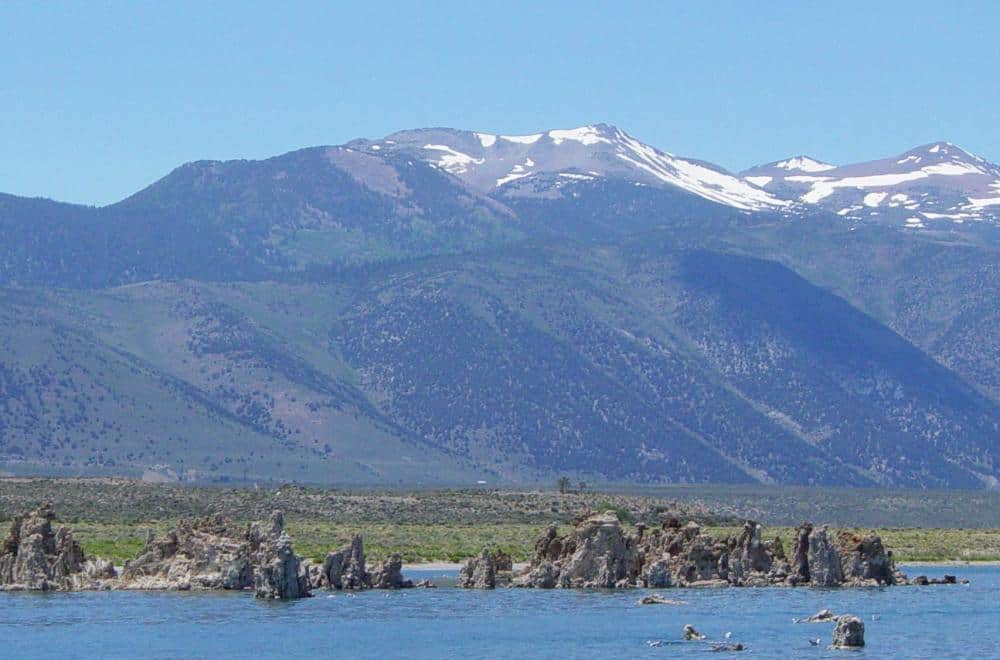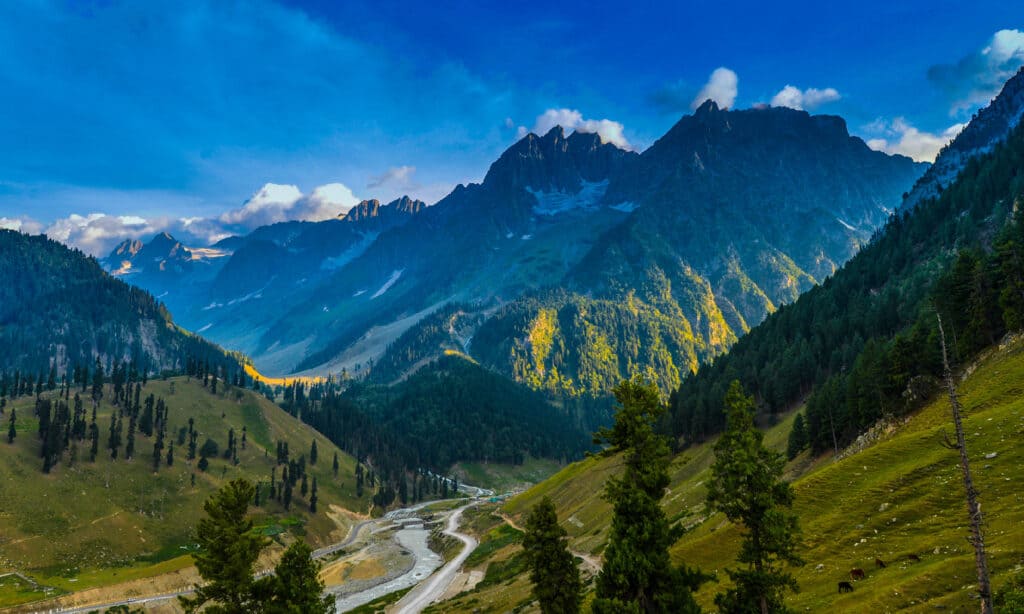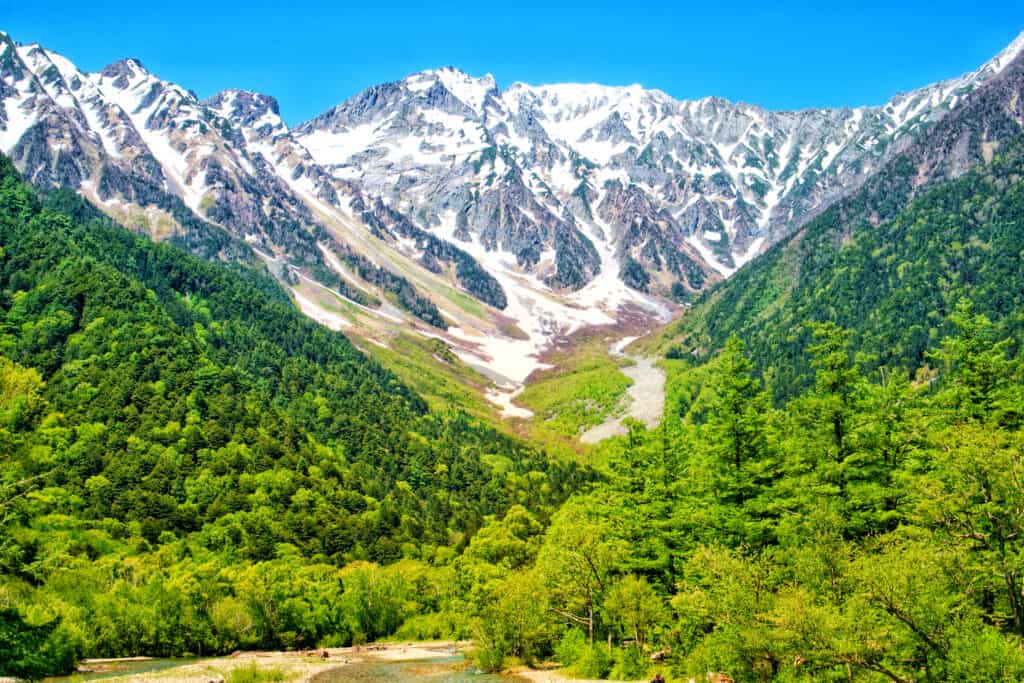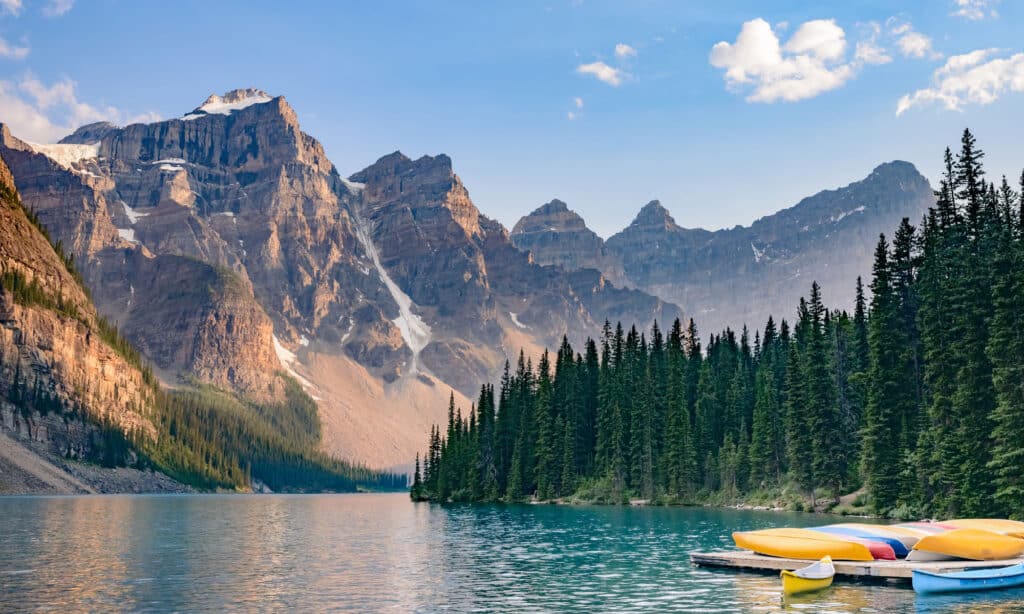Quick Answer:
- Tree lines are visible demarcations where trees stop growing.
- A tree line exists where the mean air temperature combined with the mean ground temperature no longer supports tree life.
- Tree lines can change due to factors like vacillating temperature, soil quality, sunlight, and dryness. Global warming can also cause tree lines to change.
Tree lines are most obvious on our planet where forests turn into tundra. However, they exist all around the world and not just in the Arctic. In fact, avid mountain hikers are well acquainted with tree lines.
Tree lines exist on every continent except Antarctica. Since mainland Antarctica doesn’t host any trees, it doesn’t have a tree line.
What exactly is the tree line and why does it change?
What is the Tree Line?
Tree lines are visible demarcations where trees stop growing. Tree growth is stunted and then stopped as this line approaches for a variety of reasons including temperature, soil quality, sunlight, and dryness. These reasons vary between ecosystems.
Ecotone refers to the gradual change from a forested area to an unforested one. There are maritime, mountain, arctic, alpine, and other ecotones. Ancient tree lines are gleaned from fossil records and a lot is inferred about environments based on where these lines existed.
The visible tree line seen from a distance is an area where trees are battling for existence in barely survivable conditions. Other plants like algae or lichen scratch out an existence above tree lines while trees slowly lose the battle for survival over a small distance. Normal forest density will become stumpy and sparse followed by a complete absence of trees.
Why Does the Tree Line Change?
The tree line varies around the world because different ecosystems vary. While the phrase “tree line” most often refers to tree growth stunted by increased elevation, tree lines also exist around the soaking-wet margins of swamps and bogs. In general, a tree line exists where the mean air temperature combined with the mean ground temperature no longer supports tree life.
These lines vary so frequently that opposite sides of mountain peaks have different tree lines. This is because north-facing slopes receive less sunlight than south-facing slopes in the northern hemisphere. Snowpack shortens the growing season on north-facing slopes.
These areas vary by region depending on their latitude. Regions that are farther from the equator have lower tree lines since they get less sunlight and are generally colder.
Tree lines also change from year to year. As the world experiences warming due to climate change, tree lines are advancing upward as forests expand beyond their previous boundaries. As soil higher up mountains or deeper into the Arctic becomes less hostile, more trees will take hold and survive.
Where is the Highest Tree Line in the World?
The highest tree line in the world is in the Andes near the altiplano in Bolivia. The altiplano is a high-elevation plateau that exists between huge mountains in the thickest part of the Andes range. While the entire region has an extremely high tree line, the Bolivian Andes, specifically at the Nevado Sajama Volcano, has the highest.
The wooded tree that makes up this tree line in the Andes is Polylepis tarapacana. These trees grow at altitudes just above 17,000 feet but stray specimens make it much farther. They’re stubby wooded trees that are capable of withstanding extremely low temperatures.

The Andes in Bolivia boast the highest tree line in the world.
©DaryaU/Shutterstock.com
Tree Lines Around the World
These are some of the tree lines around the world:
- Scotland: 1,600 feet
- Chugach Mountains in Alaska: 2,300 feet
- Torres del Paine in Chile: 3,100 feet
- Southern Urals in Russia: 3,600 feet
- Mt. Katahdin in Maine: 3,800 feet
- Canadian Rockies: 7,900 feet
- Japanese Alps: 9,500 feet
- Himalayas: 13,800 feet
- Bolivian Andes: 17,100 feet
The Tree Line in the European Alps
The average tree line in the European Alps is a bit over 6500 feet. Tree lines vary depending on where in the Alps the measurement is taken.
Due to climate change, the tree line is climbing higher as warming air and land become more suitable for them. In some places, the tree line is more than 8,000 feet.
While some of the tree lines inch up the mountains in the Alps, grasses that existed above the tree line are being affected. These grass ecosystems are shrinking which is causing a loss in the biodiversity of these mountain elevations.

Due to climate change, the tree line in the European Alps is climbing higher as warming air becomes more suitable.
©iStock.com/bluejayphoto
California’s Tree Line
In California’s Sierra Nevada Mountains, the tree line averages between 8,000 to 12,000 feet. These mountains are higher in the south of the range where the tree line is usually higher due to warmer average temperatures.
Because glaciers carved out these mountains and weather conditions are so poor, the soil in the Sierra Nevada range isn’t nutrient-rich. Despite this, several species of large trees manage to live in these mountains.
The tree lines in California’s coastal range are different from the Sierra Nevada because of the range’s proximity to the coast. This allows them to receive much more precipitation and keeps them at a more constant temperature between seasons. However, these mountains are not high enough to have a pronounced tree line.

In California’s Sierra Nevada Mountains, the tree line averages between 8,000 to 12,000 feet.
©Mav / Creative Commons – License
The Tree Line in Colorado
The tree line in Colorado averages around 11,500 feet. Colorado hosts the Rocky Mountains which are the largest system of mountains in North America. Colorado plays host to the highest peak in the Rockies at almost 14,500 feet.

Colorado lays claim to the highest peak in the Rockies at almost 14,500 feet.
©iStock.com/StevenSchremp
The Himalayan Tree Line
Average tree lines in the Himalayan Mountains top out around 13,800 feet. Some of the highest tree lines in the world are in the Himalayans. At this location, the ecosystems present are the most diverse of any other tree lines in the world.
When the soil temperature during the growing season is below 45 degrees, that’s where the tree line forms. It isn’t possible to take an average air temperature in the Himalayas because the temperature varies so much throughout the different ecosystems.

The ecosystems in the Himalayans are the most diverse of any other tree lines in the world.
©iStock.com/RavindraJoisa
The Tree Line in the Japanese Alps
Tree lines in the Japanese Alps usually extend no farther than 9,500 feet. Mount Fuji stands at a little over 9,800 feet high and it has a visible tree line.
The Japanese Alps are located on the island of Honshu in Japan. These mountains are broken up into three distinct ranges: the Northern, Central, and Southern Alps.
The mountains that face the Sea of Japan have a much lower tree line than the mountains that face the Pacific Ocean. This is due to the elevated snow levels created by the Sea of Japan in comparison to the milder conditions produced by the Pacific Ocean.

The Japanese Alps are located on the island of Honshu in Japan.
©ArtPanupat/Shutterstock.com
The Canadian Rockies Tree Line
The Canadian Rockies have a tree line at around 7,900 feet. This tree line is ascending much more quickly in this region since North America is most affected by climate change.
Despite this, these mountains host some of the lowest tree lines in their range because they are so far north. Because they are the northernmost mountains in the Rockies, the suitability of the environment to support trees diminishes much earlier than in New Mexico.

The Canadian Rockies host some of the lowest tree lines in their range because they are so far north.
©iStock.com/Leamus
The photo featured at the top of this post is © iStock.com/Juliana Ungaro
Thank you for reading! Have some feedback for us? Contact the AZ Animals editorial team.






